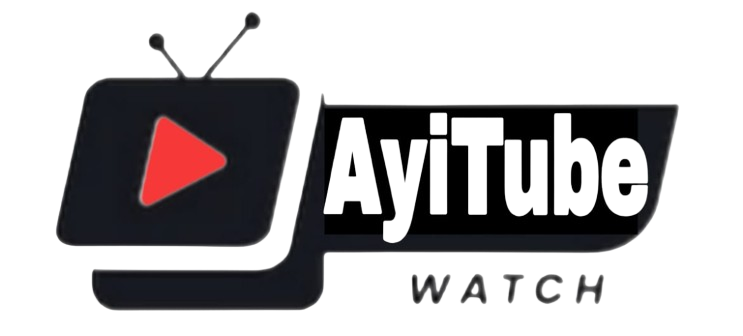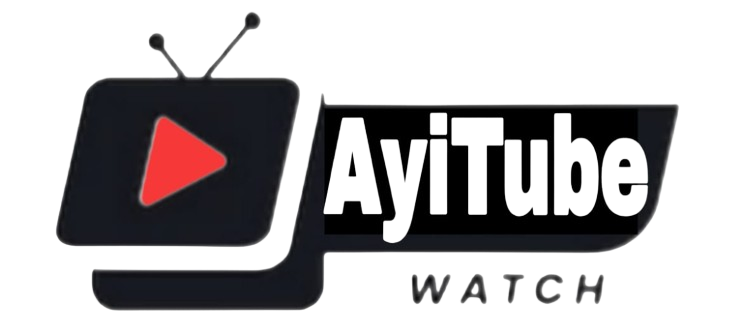Netherlands Insulation Market: Current Trends, Growth Drivers, and Future Outlook
Introduction
The Netherlands insulation market has witnessed significant growth over the past decade, driven by increasing awareness of energy efficiency, environmental sustainability, and the need to reduce heating and cooling costs in residential and commercial buildings. Insulation plays a crucial role in enhancing building performance, reducing energy consumption, and lowering greenhouse gas emissions. As the Netherlands continues to focus on sustainable construction practices, the demand for advanced insulation materials is steadily rising.
Government initiatives aimed at promoting energy-efficient buildings and stringent regulations for carbon reduction are key factors propelling market growth. Additionally, the renovation of existing building stock, coupled with new construction projects, has created a strong demand for innovative and cost-effective insulation solutions. In this context, the Netherlands insulation market presents lucrative opportunities for manufacturers, suppliers, and investors alike.
Review comprehensive data and projections in our Netherlands Insulation Market report.
Download now: https://www.databridgemarketresearch.com/reports/netherlands-insulation-market
Market Overview
The Netherlands insulation market is characterized by a diverse range of materials, applications, and end-use segments. Thermal insulation, acoustic insulation, spray foam, mineral wool, fiberglass, and rigid foam panels are among the most widely used materials in the country. Each type of insulation offers unique benefits, catering to different construction requirements and environmental standards.
Segmentation based on material type includes:
Mineral Wool: Offers excellent thermal and acoustic insulation, widely used in walls, roofs, and floors.
Fiberglass: Lightweight and cost-effective, ideal for residential and commercial applications.
Spray Foam: Provides seamless insulation with high energy efficiency, particularly for irregular surfaces.
Rigid Foam Panels: Commonly used in flat roofs and wall insulation for long-term durability.
Segmentation based on application includes residential, commercial, and industrial buildings. Residential buildings account for a significant portion of market demand due to energy-efficient renovations and government incentives for sustainable housing. The commercial and industrial sectors are increasingly adopting insulation materials to comply with energy regulations and enhance operational efficiency.
The market is also influenced by the growing adoption of green building certifications and energy-efficient design practices. These trends are encouraging builders and developers to invest in high-performance insulation solutions, thereby driving market expansion.
Drivers and Opportunities
Several factors are fueling the growth of the Netherlands insulation market.
Energy Efficiency Regulations:
The Dutch government has implemented strict energy codes and sustainability standards to reduce carbon emissions. Policies such as the Energy Performance Coefficient (EPC) and mandatory insulation for new buildings are driving demand for high-quality insulation materials.
Rising Construction Activities:
The Netherlands is experiencing steady growth in construction projects, including residential housing, commercial complexes, and industrial facilities. The increasing number of green and energy-efficient buildings creates substantial demand for insulation solutions.
Sustainable and Innovative Materials:
Technological advancements in insulation materials, such as eco-friendly and recycled products, are creating new market opportunities. Manufacturers are investing in research and development to introduce high-performance, low-impact insulation solutions that meet environmental standards.
Government Incentives:
Incentive programs for building renovations, energy efficiency upgrades, and renewable energy integration encourage the use of insulation in both new and existing structures. Financial support and subsidies for homeowners and businesses further stimulate market growth.
Retrofit and Renovation Projects:
The need to improve the energy efficiency of older buildings presents a significant opportunity for insulation manufacturers. Retrofitting existing structures with modern insulation materials reduces energy consumption and enhances occupant comfort.
Challenges and Restraints
Despite strong growth prospects, the Netherlands insulation market faces certain challenges:
High Material Costs:
Premium insulation materials, especially advanced or eco-friendly solutions, can be expensive. High costs may limit adoption, particularly among budget-conscious builders or small-scale renovation projects.
Environmental Concerns:
Some insulation materials, such as certain synthetic foams, may raise environmental concerns during production and disposal. Manufacturers are increasingly focused on developing sustainable alternatives to address these challenges.
Supply Chain Limitations:
Disruptions in raw material supply or transportation logistics can impact production and delivery timelines. Market players must adopt robust supply chain management practices to ensure consistent availability of insulation products.
Competitive Market Landscape:
The market is highly competitive, with multiple local and international players vying for market share. Companies must invest in innovation, quality assurance, and marketing strategies to differentiate themselves from competitors.
Technical Expertise:
Proper installation is critical to achieving optimal performance from insulation materials. A lack of skilled labor and training can affect the quality and efficiency of insulation applications, limiting market growth.
Competitive Landscape
The Netherlands insulation market is composed of both domestic and international players offering a wide range of products. Leading manufacturers focus on product innovation, strategic partnerships, mergers, and expansions to strengthen their market position.
Product Innovation:
Companies are developing high-performance insulation materials with superior thermal and acoustic properties. Innovations such as spray foam solutions, vacuum insulation panels, and eco-friendly alternatives are gaining traction in the market.
Strategic Partnerships:
Collaborations between insulation manufacturers, construction companies, and government agencies facilitate access to new projects and markets. Partnerships also enable joint research and development initiatives for sustainable insulation solutions.
Market Expansion:
Global players are expanding operations in the Netherlands to cater to growing demand. Local companies are also increasing production capacities and diversifying product offerings to maintain competitiveness.
The competitive landscape is further shaped by pricing strategies, quality assurance, and brand reputation. Companies that emphasize sustainability, reliability, and performance are likely to gain an edge in the market.
Future Outlook
The Netherlands insulation market is poised for sustained growth over the next five to ten years. Increasing awareness of energy efficiency, stringent environmental regulations, and technological advancements in insulation materials are expected to drive market expansion.
Emerging trends include the adoption of smart insulation solutions, integration of renewable energy systems, and increased use of recycled or eco-friendly materials. These developments are likely to enhance the performance, sustainability, and cost-effectiveness of insulation products in the Netherlands.
Moreover, the government’s long-term commitment to reducing carbon emissions and promoting sustainable construction practices will continue to support market growth. Companies that invest in innovation, eco-friendly solutions, and training for skilled installation are expected to benefit from the evolving market landscape.
FAQs
- What is driving the growth of the insulation market in the Netherlands?
The market is driven by energy efficiency regulations, government incentives, increasing construction activities, and rising awareness of sustainable building practices. - Which types of insulation materials are most popular in the Netherlands?
Mineral wool, fiberglass, spray foam, and rigid foam panels are among the most widely used insulation materials in the country. - How do government policies influence the market?
Policies such as mandatory insulation standards for new buildings, renovation subsidies, and energy efficiency regulations encourage the adoption of insulation materials. - What challenges does the market face?
High material costs, environmental concerns, supply chain disruptions, and lack of skilled labor are the main challenges affecting the market. - Who are the major players in the Netherlands insulation market?
The market includes both local and international manufacturers who compete based on innovation, quality, sustainability, and market reach. - What opportunities exist for insulation manufacturers?
Opportunities include eco-friendly and high-performance materials, retrofitting older buildings, partnerships with construction companies, and participation in green building projects. - What is the future outlook for the market?
The market is expected to grow steadily due to technological innovations, increasing demand for energy-efficient buildings, and the government’s commitment to sustainability and carbon reduction.
Browse More Reports:
Global Military Truck Market
Global Mine Rescue Vehicle Market
Global Modified Wheat Starch Market
Global Moisture Wicking Fabrics Market
Global Molded Fiber Packaging Market
Global Molecular Cytogenetic Systems Market
Global Motion Control Market
Global Multimodal AI Market
Global Mycorrhizae-based Biofertilizers Market
Global Myxoma Market
Global Nanoclays Market
Global Nasal Polyposis Drugs Market
Global Natural Fruit Flavor for Beverages Industry Market
Global Natural Sleep-Enhancing Aid Market
Global Needle-Free Injection System Market
About Data Bridge Market Research:
An absolute way to forecast what the future holds is to comprehend the trend today!
Data Bridge Market Research set forth itself as an unconventional and neoteric market research and consulting firm with an unparalleled level of resilience and integrated approaches. We are determined to unearth the best market opportunities and foster efficient information for your business to thrive in the market. Data Bridge endeavors to provide appropriate solutions to the complex business challenges and initiates an effortless decision-making process. Data Bridge is an aftermath of sheer wisdom and experience which was formulated and framed in the year 2015 in Pune.
Contact Us:
Data Bridge Market Research
US: +1 614 591 3140
UK: +44 845 154 9652
APAC : +653 1251 975
Email:- corporatesales@databridgemarketresearch.com
- Art
- Causes
- Crafts
- Dance
- Drinks
- Film
- Fitness
- Food
- Jocuri
- Gardening
- Health
- Home
- Literature
- Music
- Networking
- Alte
- Party
- Religion
- Shopping
- Sports
- Theater
- Wellness


